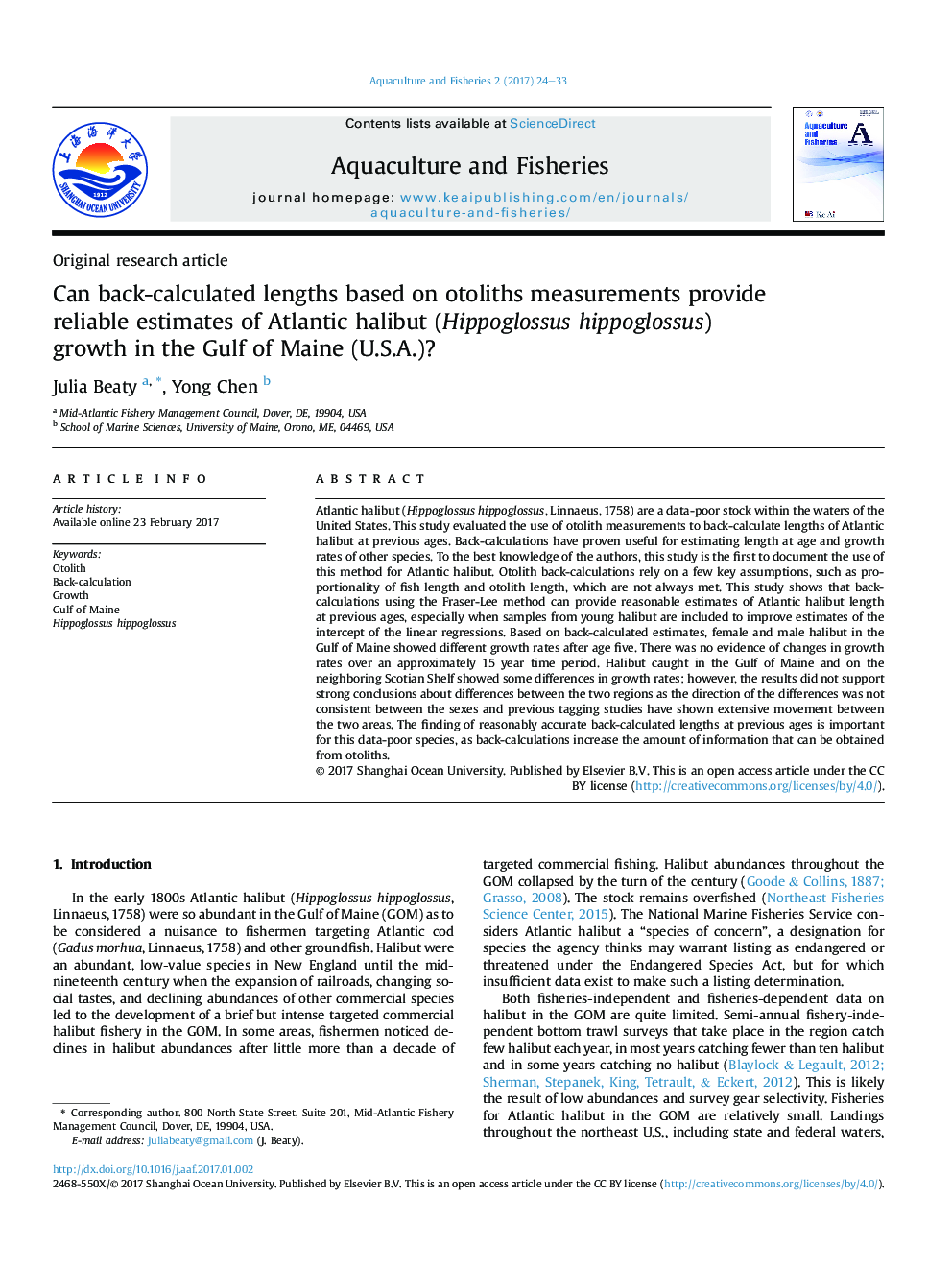| Article ID | Journal | Published Year | Pages | File Type |
|---|---|---|---|---|
| 8920027 | Aquaculture and Fisheries | 2017 | 10 Pages |
Abstract
Atlantic halibut (Hippoglossus hippoglossus, Linnaeus, 1758) are a data-poor stock within the waters of the United States. This study evaluated the use of otolith measurements to back-calculate lengths of Atlantic halibut at previous ages. Back-calculations have proven useful for estimating length at age and growth rates of other species. To the best knowledge of the authors, this study is the first to document the use of this method for Atlantic halibut. Otolith back-calculations rely on a few key assumptions, such as proportionality of fish length and otolith length, which are not always met. This study shows that back-calculations using the Fraser-Lee method can provide reasonable estimates of Atlantic halibut length at previous ages, especially when samples from young halibut are included to improve estimates of the intercept of the linear regressions. Based on back-calculated estimates, female and male halibut in the Gulf of Maine showed different growth rates after age five. There was no evidence of changes in growth rates over an approximately 15 year time period. Halibut caught in the Gulf of Maine and on the neighboring Scotian Shelf showed some differences in growth rates; however, the results did not support strong conclusions about differences between the two regions as the direction of the differences was not consistent between the sexes and previous tagging studies have shown extensive movement between the two areas. The finding of reasonably accurate back-calculated lengths at previous ages is important for this data-poor species, as back-calculations increase the amount of information that can be obtained from otoliths.
Related Topics
Life Sciences
Agricultural and Biological Sciences
Aquatic Science
Authors
Julia Beaty, Yong Chen,
